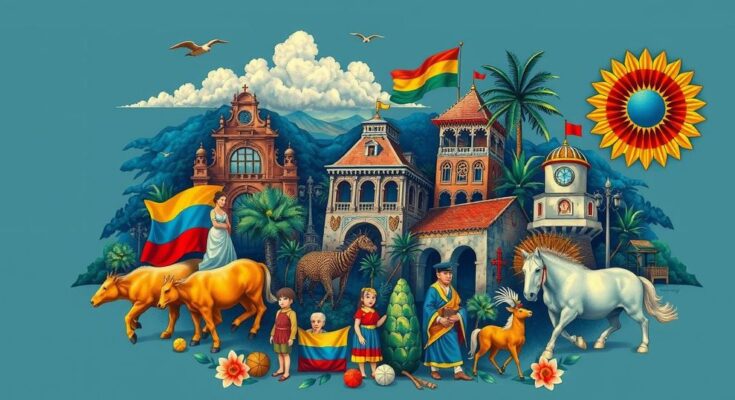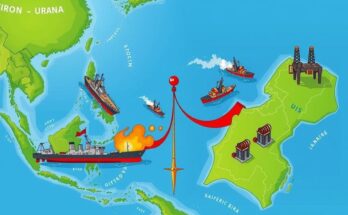The fight for Colombian independence began following the French invasion of Spain in 1808, leading to the rebellion in Bogotá in 1810 and subsequent declarations of independence. The formation of Gran Colombia in 1819 represented a brief unified state under Bolívar, but internal strife and the eventual dissolution of the republic in 1830 reflected deep political divisions. The turmoil laid the groundwork for future conflicts between liberals and conservatives.
The origins of Colombian independence trace back to the tumultuous period following the French invasion of Spain in 1808. This invasion ignited a fervent loyalty to the Spanish crown among colonists, yet it simultaneously instigated concerns regarding the status of the church and the future of the Spanish Empire. The colonies in New Granada gradually expelled Spanish officials, culminating in the revolutionary uprising in Bogotá on July 20, 1810, recognized today as Independence Day. Although the initial governance still swore allegiance to King Ferdinand VII, true independence was not declared until 1811.
The subsequent years were marked by internal strife as various factions sought control. Leaders such as Simón Bolívar and Francisco de Paula Santander emerged during this tumult, uniting rebel forces and leading to military victories that would culminate in the establishment of Gran Colombia in 1819. This republic initially encompassed present-day Colombia, Venezuela, Ecuador, and Panama, operating under a centralized government structure with Bolívar as president. However, persistent rivalry, combined with discontent among the populace, resulted in increasing fragmentation. By 1830, Bolívar had resigned and Gran Colombia dissolved, leading to the emergence of a standalone New Granada.
Under Santander’s presidency from 1832 to 1837, a degree of political stability and initial economic progress was achieved, although the emergence of civil war in 1840 disrupted growth and harbored long-lasting political rivalries. This period ultimately foreshadowed a cycle of liberal and conservative conflicts that would plague the nation well into the 20th century, highlighting the fragile and volatile nature of Colombian governance during its early years of independence.
The struggle for Colombian independence, originating from the early 19th-century upheaval, is significantly entwined with the broader decline of Spanish colonial rule in the Americas. The invasion of Spain by Napoleonic forces activated desires for self-governance among colonial leaders, while figures like Bolívar galvanized efforts that ultimately led to independence. This historical context illustrates the complexities of governance and identity formation in post-colonial Colombia, setting the stage for its evolving political landscape.
The narrative of Colombia’s journey to independence reveals a tumultuous struggle characterized by internal divisions and external conflicts. The establishment of Gran Colombia marked a significant milestone, yet rivalries among regional leaders and the dissolution of this republic underscored the challenges facing the newly independent nation. The subsequent political turbulence highlights the deep-rooted tensions between liberal and conservative ideologies that would persist, shaping the trajectory of Colombian history well into the future.
Original Source: www.britannica.com




